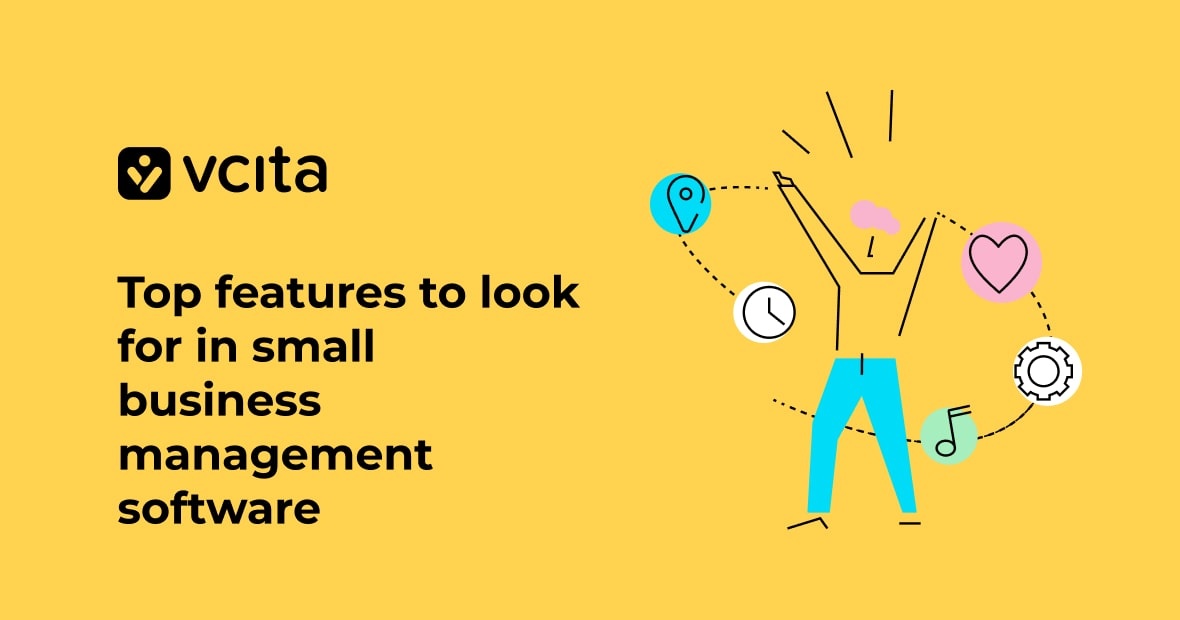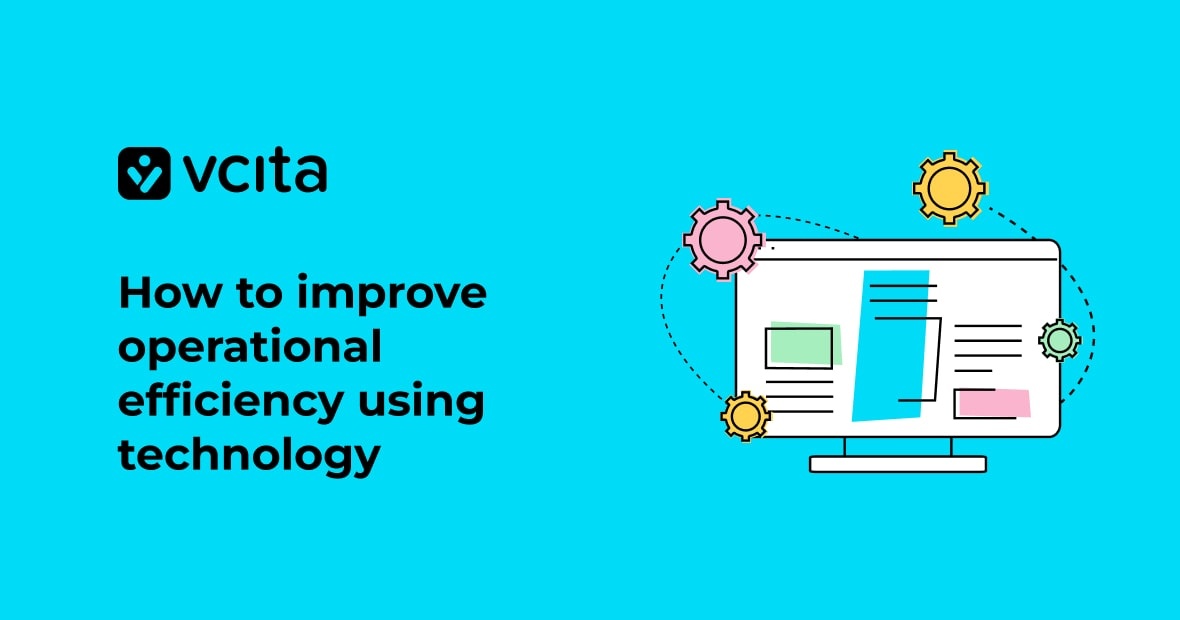Effective cash flow management is crucial to keeping the doors of your small business open. Many small business owners struggle with cash flow issues and experience the stress of not knowing if they’ll have enough cash on hand to meet their short term obligations. If this sounds familiar, you’re not alone.
The good news is that there are steps you can take to maintain positive cash flow and ensure that you have enough working capital for your short and long term business operations. It only takes a few smart strategies to manage your cash flow, gain financial stability, and feel free to focus on growing your business.
Cash flow management for small businesses: an overview
Cash flow refers to the money flowing in and out of your business each month. It’s not the same as profits and losses, because it refers to the actual income and expenditure you see on a regular basis. Positive cash flow is vital to fund business operations and keep your business above water.
Managing cash flow might sound daunting, but you just need to know the right techniques. By monitoring your cash flow statement, adjusting accounts receivable to maximize how quickly you receive payments, reducing your accounts payable to take advantage of discounts, establishing lines of credit, and forecasting your cash flow, you can avoid cash flow problems and build your cash reserves.
Preventing short-term cash flow issues
In the short term, your goal is to have enough cash on hand to pay bills and meet other financial obligations. Some key strategies include:
- Closely monitoring accounts receivable and accounts payable. Know how much money is owed to you and how much you owe others, collect from customers quickly, and pay vendors on time.
- Reviewing your cash flow statement regularly. This shows your sources and uses of cash over a period of time, so you can look out for any negative trends and make changes quickly.
- Building up your cash reserves for emergencies. A good rule of thumb is to have enough to cover 3-6 months of expenses.
- Exploring lines of credit as a backup. Credit cards, bank loans, and lines of credit can help in a cash flow pinch, and make sure you only use them for short term needs, and pay them off quickly.
Achieving positive cash flow in the long term
For ongoing stability and growth, focus on the long term goal of positive cash flow. Some tips include:
- Improve your budgeting and accounting. Use accounting software to get real-time data on income and expenses, and create a realistic budget and cash flow forecast.
- Reduce accounts receivable. Get customers to pay more quickly by offering discounts or changing payment terms.
- Manage growth carefully. Make sure revenue growth outpaces expense growth, and reinvest excess cash in the business.
- Market for new customers. Increase sales to bring in more money each month, with particular focus on satisfied, repeat customers.
- Renegotiate with vendors. See if you can get better terms, lower prices or added value from suppliers. Every dollar saved adds to your bottom line.
By monitoring short term cash needs and working to build positive cash flow over time, you’ll gain financial control of your small business. Now let’s take a closer look at some of the key strategies to stable cash flow.
Forecast and track your cash flow
The best way to get a handle on your cash flow situation is by forecasting your expectations for the future, and tracking actual cash flow on a regular basis.
Cash flow forecasting means estimating how much money will be coming in (accounts receivable) and going out (accounts payable) of your business over a set period of time, so you can anticipate how much cash you’ll have on hand each month. Identifying potential cash flow issues in advance allows you to plan to avoid them.
Some tips for forecasting your cash flow:
- Use accounting software or an Excel spreadsheet to track income, expenses, accounts receivable and payable. Good accounting software like vcita can do this for you by creating easy to read graphs and reports.
- Review your records regularly to spot trends, consider current and historical economic conditions, and factor in seasonal changes or fluctuations in your industry.
- Write down your short and long term business goals and plans for growth and investment over the next 3-12 months and 1-5 years.
- Based on the patterns you see in your records and your plans for your business, create cash flow forecasts for the next 3-12 months to anticipate short term needs, and for 1-3 years to plan for bigger investments.
- Update your forecasts on a monthly or quarterly basis, as you get more data and make adjustments to your business operations.
Manage accounts receivable and accounts payable
The money owed to your business from customers (accounts receivable) and the money your business owes to vendors or suppliers (accounts payable) directly impact your cash flow, so managing your accounts receivable and accounts payable is key to maintaining positive cash flow.
Accounts receivable
It’s important to do all you can to ensure that your accounts receivable is organized. To improve accounts receivable management, it’s a good idea to:
- Establish clear credit policies and payment terms.
- Shorten the time between invoicing customers and receiving payments by sending invoices promptly and offering incentives for early payment.
- Use accounting software to track invoices and payments.
- Send reminders when payments are past due.
- Offer multiple payment options to make it easier for customers to pay on time.
Accounts payable
When you keep your accounts payable under control, you won’t be taken by surprise by payment requests and will be able to plan your outgoings more accurately. To manage accounts payable more smoothly, you should:
- Make sure to pay vendors on time according to the payment terms, to avoid late fees and damage to your business relationships.
- Take advantage of any discounts for early payment.
- Get automated by using accounting software to schedule bill payments.
- Pay bills regularly and frequently so you avoid getting behind.
Build cash reserves and access short term financing
Establishing adequate cash reserves is a key element to managing your short term cash flow, and it’s essential for stability and success. Cash reserves refer to the cash you have on hand to cover costs and expenses. It serves as a means to pay employees and suppliers even during tough times, giving you a safety net so you can continue business operations even when cash flow is low. Most experts recommend having enough to cover 3 to 6 months of operating expenses.
Here are some ways to build cash reserves:
- Focus on accounts receivable. Work to have invoices paid on time, because the faster you get paid, the more cash you’ll have on hand.
- Trim unnecessary expenses. Look for ways to cut costs in your budget and redirect that money into your cash reserves. This could include reducing utility bills, cutting the cost of supplies, or renegotiating with vendors.
- Increase sales and revenue. The more money coming in, the more you can set aside. Try boosting sales through promotions, networking, social media, or improving your product. Every bit helps.
It’s also a good idea to inform yourself about short-term financing support that you can turn to in a pinch. Short term financing options include:
- Lines of credit, which allow you to draw funds as needed to cover costs.
- Business credit cards, which let you pay later for vital purchases
- Short-term business loans from your bank, credit union, or the SBA
Whatever you use, make sure to pay the balance off quickly to avoid high interest charges, otherwise you could just make your cash situation worse. Short term solutions like lines of credit and credit cards can help in emergencies, but the key is developing good cash flow management practices and enough cash on hand to get you through whatever comes your way.
The systems and habits you need for ongoing cash flow stability
As a small business owner, spending regular time focused on cash flow management is key to stability in both the short and long term. Implementing solid bookkeeping habits and systems will help increase your cash flow and decrease stress.
Track business expenditure
Monitor and analyze all business purchases so you can create realistic cash flow projections. This helps ensure you have enough cash on hand to cover essential expenses like rent, payroll, and inventory. Review your cash flow statement and accounts receivable regularly to see who owes you money and when it’s due.
Pay bills on time
It might seem counterintuitive, but it’s best to pay bills on time, not early, unless you get a discount for early payments. This way you have more cash in your account to use for any business needs that arise. Make the most of any net payment terms offered by vendors.
Use business management software
Business management and accounting software like vcita helps you handle invoicing, bill payments, and other tasks efficiently by automating bill payments and payment reminders, and producing cash flow reports that make it easy to see your real-time cash position and catch any cash flow issues early.
Build up cash reserves
Consider opening a high-yield business savings account to serve as a buffer in case of income fluctuations or unforeseen expenses. Only use it when you really need it, and repay it quickly so it’s ready for next time.
Use credit wisely
It can be a good idea to use credit cards that offer rewards to make business purchases, then pay on time to avoid interest charges. This helps maximize your working capital, build your business credit score, and take advantage of rewards and discounts.
Well-organized cash flow is the foundation for business success
Developing disciplined cash flow management habits and using the right tools will help ensure your small business maintains positive cash flow and financial stability long-term. Closely monitoring cash flow and making adjustments quickly allows your business to run smoothly, even when the unexpected happens. With diligent cash flow forecasting and by taking steps to ensure positive cash flow, you’ll be in a much better position to ensure your small business has enough cash on hand to cover day-to-day operations and unexpected costs, and to thrive in the long term.




























